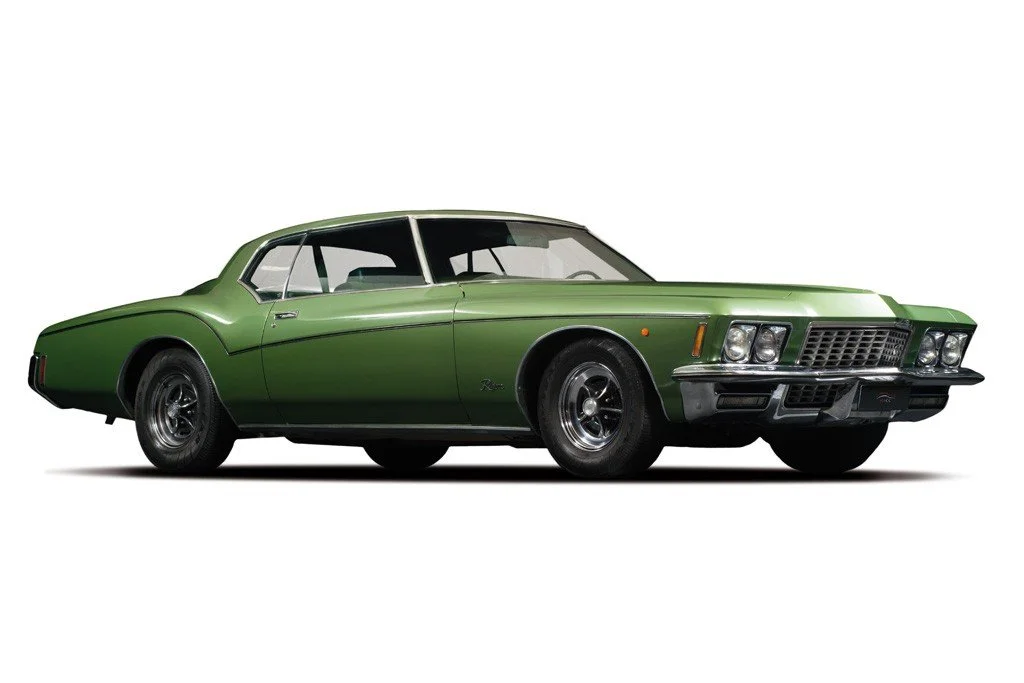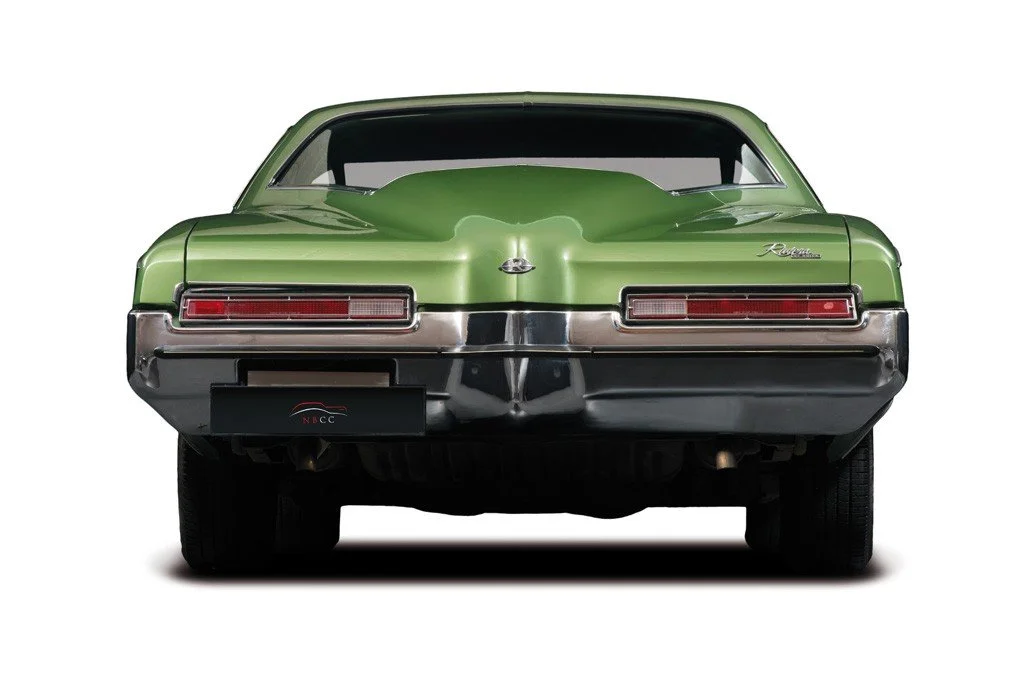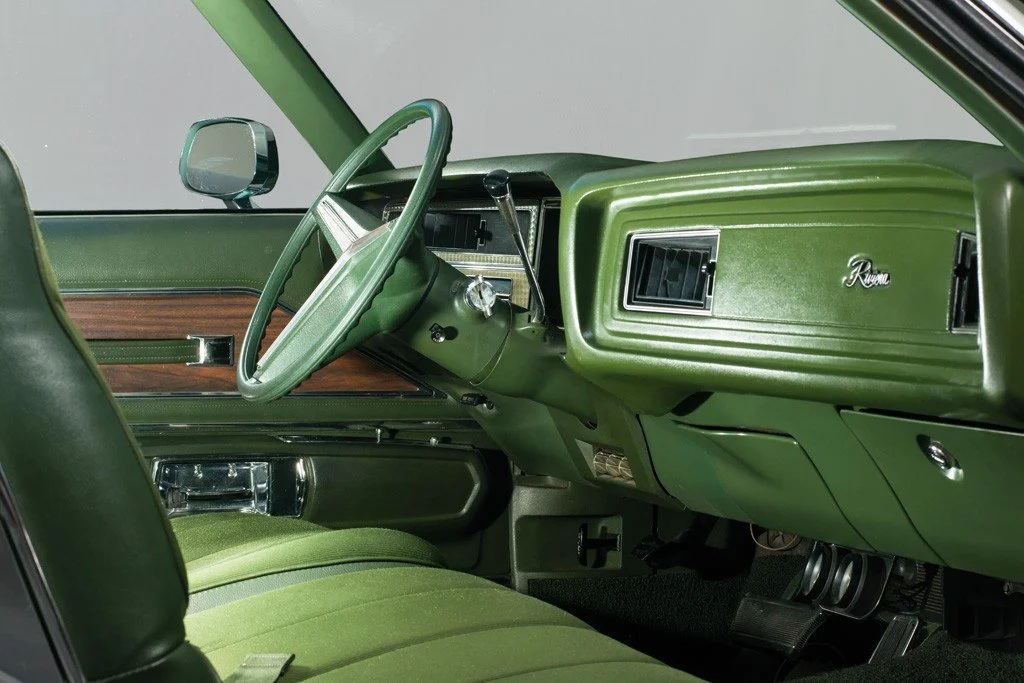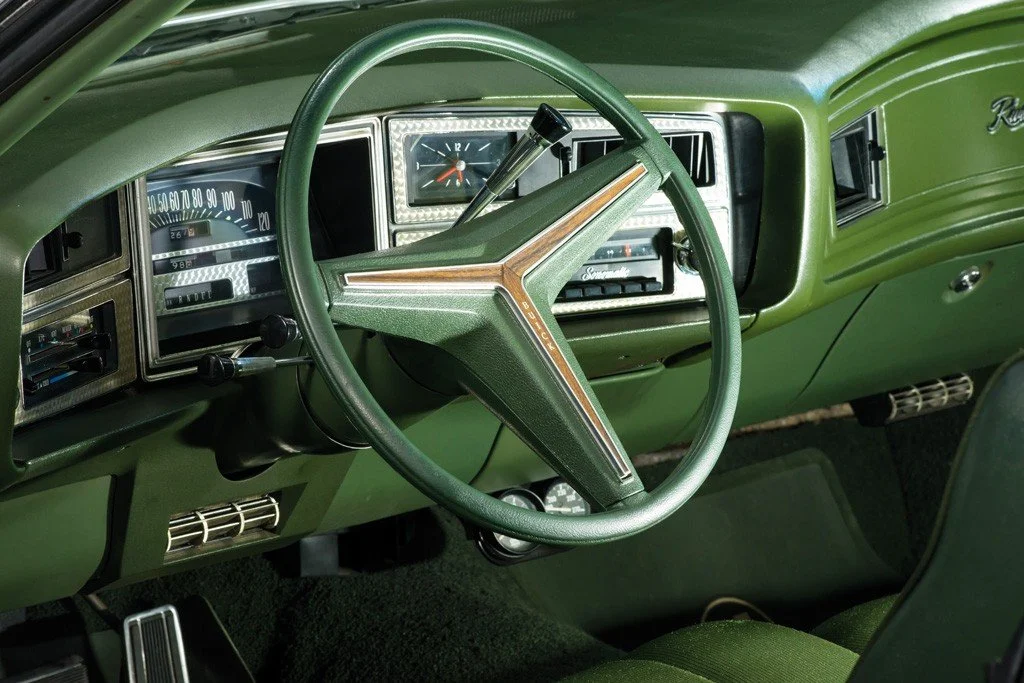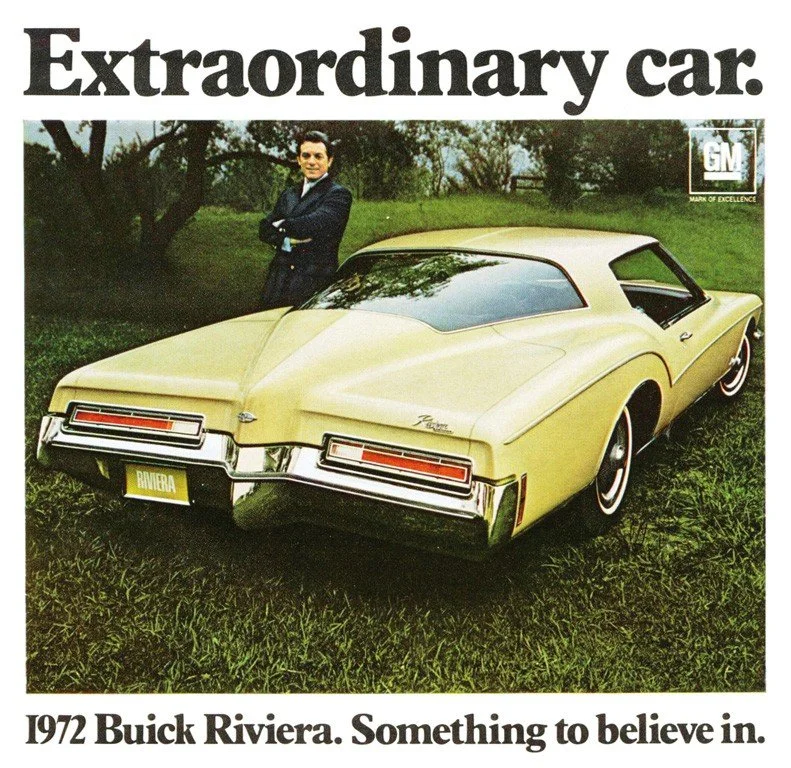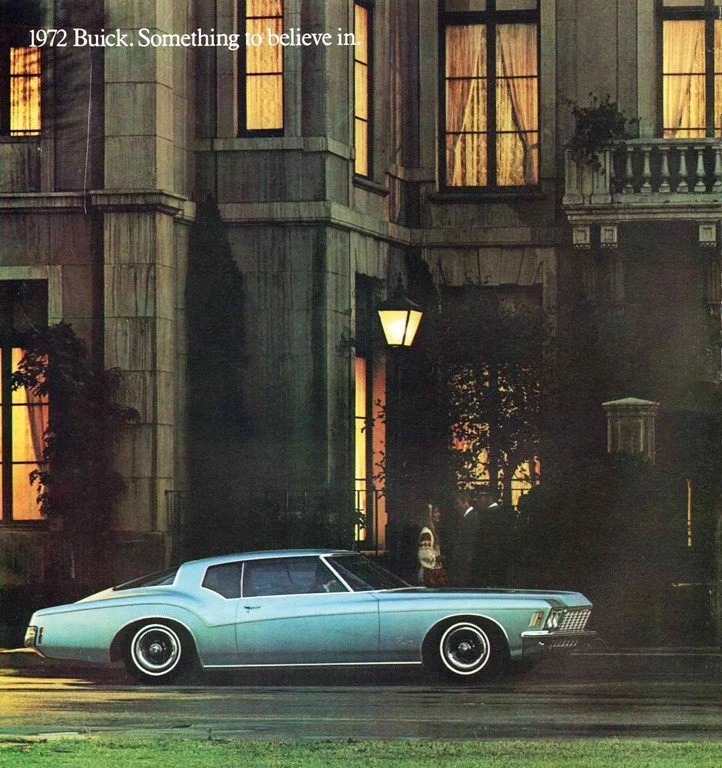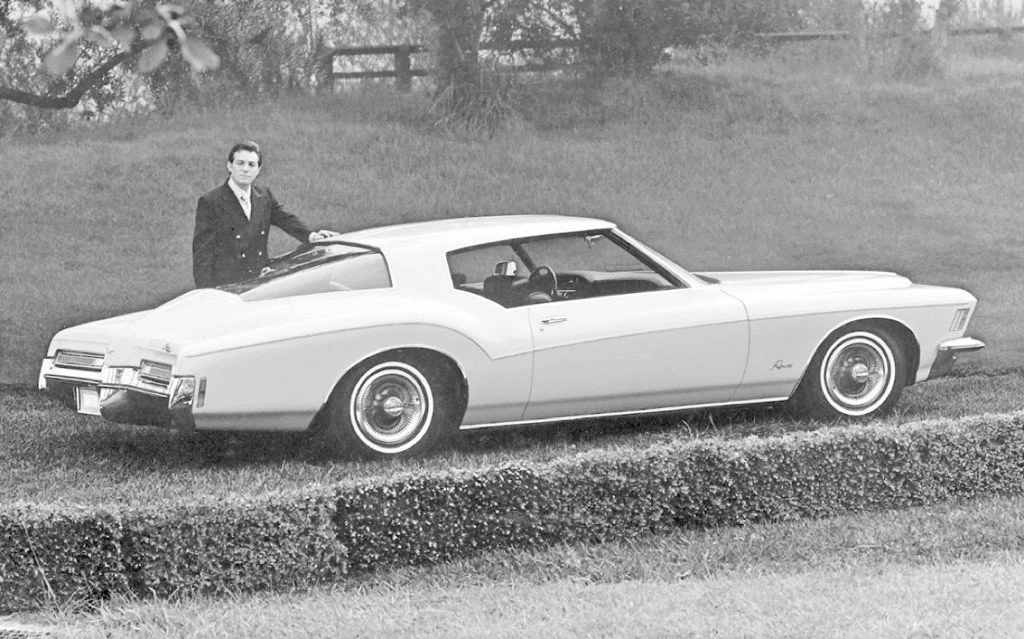-
The third generation of Buick Riviera was launched with the extraordinary design of the 1971 model; so it’s no surprise that it was voted “Car of the Year” by the respected Motor Trend magazine of the era. The Buick Riviera model of 1972 is the virtually unchanged continuation of the model launched in ’71, in that the slight aesthetic differences would only be noticed by an expert.
The 1972 Buick Riviera of the Nicola Bulgari Collection, in the color Emerald Mist, was owned by a sedate American lady until 2005. The car only had its body paintwork “freshened up”, just enough to make it shine. Then some maintenance work, routine and additional, was carried out over the years. Taking an admiring look at the original curve of the roof and the line of the large rear window gives us an idea of how much study and thought was put into car design at the time. This impression is increased thanks to the immaculate condition of this model, which boasts every single part as completely original. Like the plastic of the dash, the interior finished in Green cloth shows no sign of wear and gives the viewer the priceless sensation of a new car.
At the wheel, the curved instrument panel wraps around the driver giving a reassuring sensation of protection and control, while at cruising speed only a slight touch of acceleration is needed thanks to the power of the 455 cu. in. V-8 big block engine. -
Company
General MotorsWheelbase
122inInterior trim
Green clothBrakes
disc front, drum rearMake
BuickLength
218.3inEngine
V8 - 455cidTires
H78x15Model
RivieraWidth
80inCarburetor
1 Rochester 4MV 4-barrelOriginal Price
$5,149Body style
2-door Hardtop CoupeWeight
4368lbsHorsepower
250hp @ 4400rpmProduction
33,728Model year
1972Exterior paint
Emerald MistTransmission
Turbo Hydra-Matic 400 automatic 3-speed -
The automobile industry has yielded memorable and not-so-memorable cars throughout its short history. Each generation of automobile models has, for one reason or another, found itself nestled within its own clique: loved or hated, niche group or broad appeal. Such is the case with the 1971-'73 Buick Riviera, a car that some question while others gaze lustfully upon. The Riviera's boattail is one design element that has been on the drawing board for far longer than anyone would care to recall, seen most notably on Auburn Speedsters. Few realize or would dare to admit that, in its basic form, the boattail shape fell upon the 1963-'67 Corvette, thanks to Styling Director Bill Mitchell. Mitchell had long been a fan of the classic styling, and its modern interpretation with the dramatic fastback roofline combined with a low stance was kept alive by his encouragement, eventually pressed into the styling room over at Buick sometime after 1968. The end result is perhaps one of the most classic, yet controversial, Buicks ever to leave the assembly line for three solid years. Fortunately for you, acquisition of the stylish and sporty Mitchell design is still within reach. Buick engineers abandoned the cruciform style frame in favor of a perimeter design to accommodate the new four-link rear suspension, resulting in a wheelbase measuring 122 inches; longer than any previous Riviera.
Design changes from year to year are minimal. The most noticeable arrives in the grille, as a different design graces the nose each year. Taillamp lens and surrounding trim also differs between model years, and the louvers were absent from the rear decklid in 1972 and '73. A short vinyl top was offered as an option late in '72 production; it covered the front portion of the top.
Introduced for the 1972-'73 model years were 60/40 split front bench seat, enabling individual adjustment of the bench seat. The rest of the interior remained virtually unchanged during the three-year run. Strato bucket seats were offered only on 1971-'72 models. In 1972, power-rating methods changed from gross to net - carried out with the air cleaner and mufflers installed - resulting in lower advertised numbers. Though the 455 V-8 remained unchanged, horsepower was rated at 250, while the net torque rating fell to 375-lbs.ft. This version of the 455 remained in place for 1973 as well.
Only one transmission was available, the Turbo Hydra-Matic 400. This durable three-speed automatic has its shift lever located on the steering column, or in the center console as an option.
Significant differences to the front and rear appeared as the result of federal regulations effective in 1973, which required cars to withstand a 5 mph barrier crash without damage to safety equipment. The result was a massive front bumper and a reduction in the peaked rear bumper, trunk lid and rear fascia. Front bumper guards arrived as standard equipment in 1973, and the Riviera oval ornament was moved from the grille to the panel above it. Headlamps and parking lamps resided in one bezel on each side of the grille in 1973, wrapping around the edge of the front fender. Over the course of its three-year run, the boattail grew from 217.4 to 223.4 inches in length and gained nearly 200 pounds.

